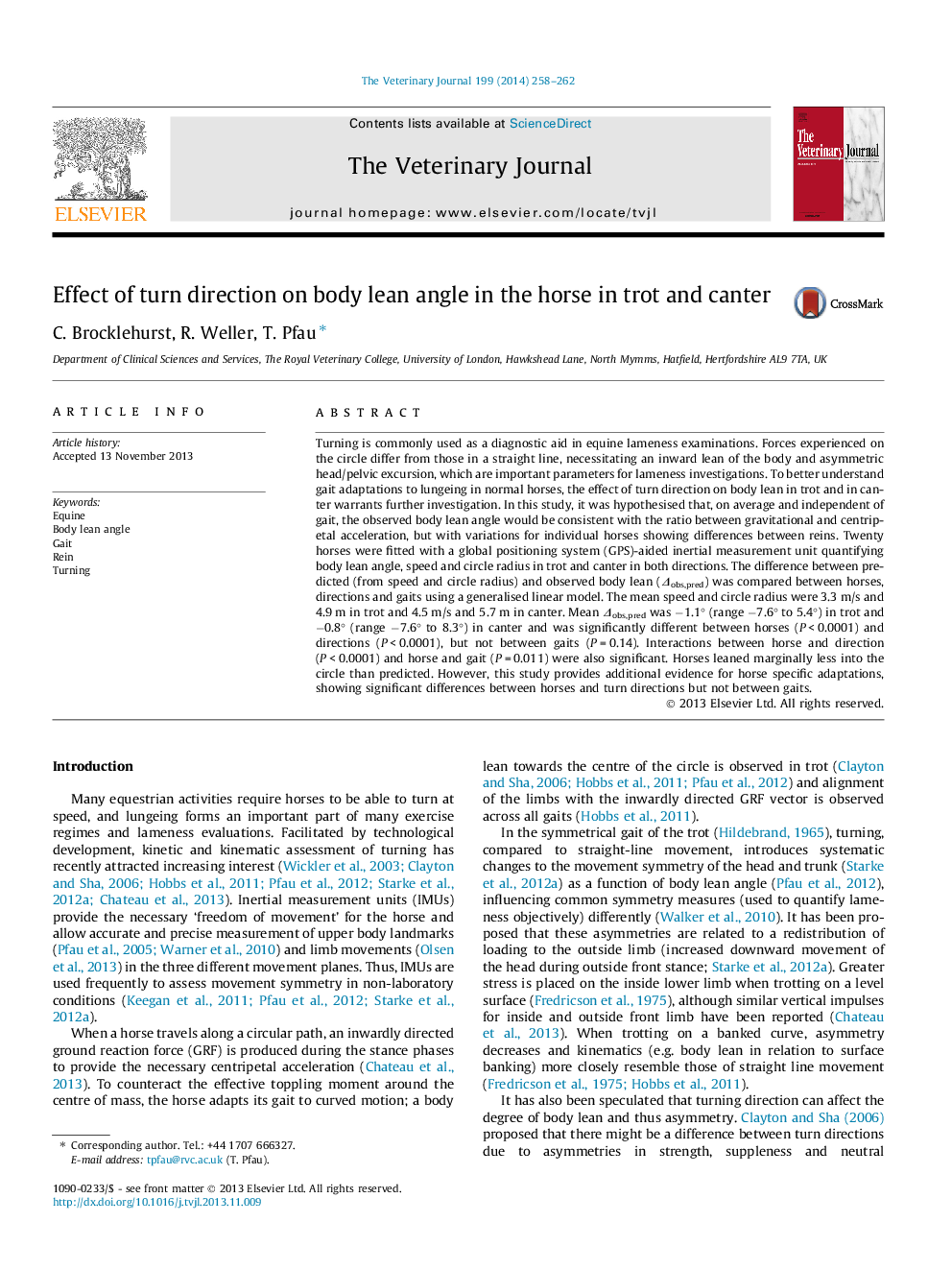| کد مقاله | کد نشریه | سال انتشار | مقاله انگلیسی | نسخه تمام متن |
|---|---|---|---|---|
| 5798391 | 1111776 | 2014 | 5 صفحه PDF | دانلود رایگان |
Turning is commonly used as a diagnostic aid in equine lameness examinations. Forces experienced on the circle differ from those in a straight line, necessitating an inward lean of the body and asymmetric head/pelvic excursion, which are important parameters for lameness investigations. To better understand gait adaptations to lungeing in normal horses, the effect of turn direction on body lean in trot and in canter warrants further investigation. In this study, it was hypothesised that, on average and independent of gait, the observed body lean angle would be consistent with the ratio between gravitational and centripetal acceleration, but with variations for individual horses showing differences between reins. Twenty horses were fitted with a global positioning system (GPS)-aided inertial measurement unit quantifying body lean angle, speed and circle radius in trot and canter in both directions. The difference between predicted (from speed and circle radius) and observed body lean (Îobs,pred) was compared between horses, directions and gaits using a generalised linear model. The mean speed and circle radius were 3.3 m/s and 4.9 m in trot and 4.5 m/s and 5.7 m in canter. Mean Îobs,pred was â1.1° (range â7.6° to 5.4°) in trot and â0.8° (range â7.6° to 8.3°) in canter and was significantly different between horses (P < 0.0001) and directions (P < 0.0001), but not between gaits (P = 0.14). Interactions between horse and direction (P < 0.0001) and horse and gait (P = 0.011) were also significant. Horses leaned marginally less into the circle than predicted. However, this study provides additional evidence for horse specific adaptations, showing significant differences between horses and turn directions but not between gaits.
Journal: The Veterinary Journal - Volume 199, Issue 2, February 2014, Pages 258-262
